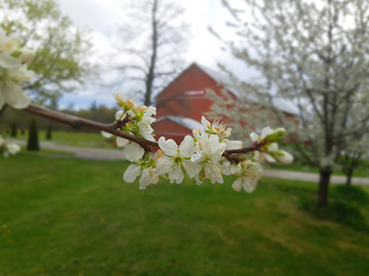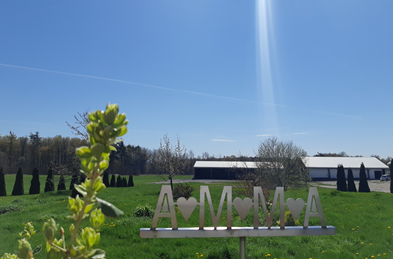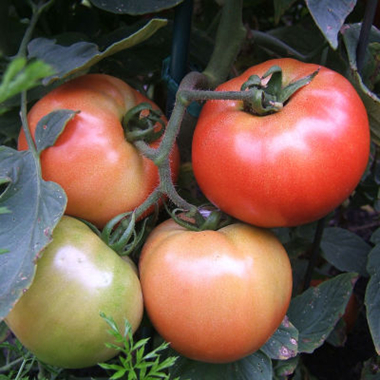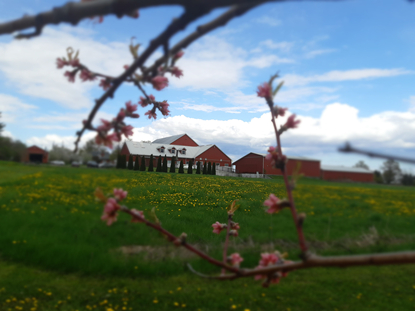
| Home | Source Reduction | Friends of Green Friends | Newsletters |
| Gardening | Resources | What You Can Do | Embracing The Trees |
| Gardening Techniques - Preparation and Planning |
| Planning Your Garden
It’s winter. The time to plan the garden and get ready for spring. This is the time to evaluate last year’s harvest, if it’s not your first time, to see what worked and what didn’t. Some Questions to Ask Yourself:
Four-Season Planning The solution to some of these questions is to sit and create a four-season plan: one for early spring, then for mid-spring, another for early summer and, lastly, for late-summer and fall. After taking stock of your prior year, if it’s your first time, decide what you like to eat and which vegetables you have enjoyed eating, or would like to try. It is always a good idea to try at least one vegetable that you have not grown before. Decide how many varieties of a given vegetable you will be growing. If you grow peppers, are they going to be Habaneros, sweet peppers or bell peppers, or a few plants of each type? |
 Apple blossoms at Amma's ashram in Georgetown, Canada |
|
Consider Placement Then survey and measure your garden. Where is the north versus south? Where should the paths be, and the compost? If you have a compost pile or bin, was it placed correctly, or does it need moving? Do the raised beds need expansion, or should they even be moved? Was there enough room left in the paths for a wheel barrel to go through? How Much Color Can You Incorporate in the Garden? This is really important for several reasons. A garden can become a place to relax and escape into your own world. It’s important for it to look pleasing to the eye, and the greater amount of color, the better. You can leave a section or small area for planting flowers or various types of peppers that have different colors, or herbs that give a fragrance when handled. All these different inputs can help make your garden experience joyful and relaxing in addition to providing you with great fresh produce. Creating the Plan Some additional considerations: do we want a focal point? Do you need fencing to keep deer, groundhogs, and rabbits out? Would you like to use containers for certain crops? If you are planting perennials such as rhubarb or asparagus, they need a permanent place where they won’t interfere with the rest of the garden? It is very important to avoid interference between plants. When you start the plan, it is best to have different layers. You should place them based on the layers according to the height of the plants. |
|
Let’s Take an Example: Tomatoes If they are the kind that is indeterminate (keep growing indefinitely), in the north they can get to be five to six feet tall by late summer. They will shade anything that is behind them. If you are in more southern states, they will be a lot taller and everything will be shaded. Therefore, these should be placed more toward the north side. You can also take advantage of the shade they provide and plant shade-tolerant plants that will thrive with tomatoes. One example could be planting tomatoes with parsley or carrots. As long as they get a little sun or dappled sun, they will do well during the summer months and can be grown from spring through fall. Once the tomatoes are done, you carefully remove the plant by cutting the base of the tomato plants and allowing the parsley to finish the season into late fall. Put these ideas on paper and specify where plants should go. Note when you anticipate the harvest to take place based on the date the variety will be ready. Consider if radishes are planted - they would be ready in thirty days from seed to harvest. Will you follow with a second and third crop? |
|
Succession Planting Succession planting will work great if you plan it out and know when the last planting will take place in a given space. You can do this as a family project, with the kids coloring the various plants and deciding what they should grow. If children grow something, they then tend to eat it, as if it was their labor. The curiosity rises in them, and the greater their involvement in the garden the better. Making a List and Choosing Seeds Make a list of the early spring plants that are cool weather crops, followed by the warm season crops and, once again, the cool season plants. Once your plan is complete and you have decided where things should go, then order the seeds. This way you don’t order way more than what you need. Seeds only last two years or so in the refrigerator. After two years, their germination rate goes down significantly. In this list you should note if you want seeds if you are going to start your own seedlings, or if you plan on buying those plants that require transplants like broccoli, cabbage or cauliflower and, if so, who will be your supplier. Where are you going to order the asparagus or rhubarb crowns? Are you planning to put in strawberry plugs or bare-root blackberry plants? |
|
|
|
Pre-Purchase Items It’s a good idea to purchase pots for herbs; this way they will not take over the garden and can easily be moved. Or create a small raised bed for just the herbs. Some will easily survive through any winter. Mints and their family should be kept in pots, no matter what. Otherwise, they will invade your garden and take over. Since they need drainage you will need holes on the pots. The problem with the holes is the roots can reach the soil in the garden and spread. Considered placing a piece of cardboard under the pot to prevent the roots from invading the garden. Later in the season check under the pot to remove any roots that start to grow outside of it. Purchase growing trays or materials to make your own blocks to start seedlings. Build a cold frame and purchase your shade-netting units and floating row cover made of cloth for insect protection. Now you are on your way to having a well-planned garden. Be ready for spring! For more information about organic growing go to https://www.youtube.com/channel/UCKbW1eBuY2qagXeErdiAtHg/videos Marleny, Massachusetts |
 Trees in bloom at Amma's ashram in Georgetown, Canada |
Read Whale Economics from the Q2 2021 newsletter >>
| Home | Source Reduction | Friends of Green Friends | Newsletters | Resources | What You Can Do | Embracing The Trees |
For more information, e-mail info@greenfriendsna.org |
||||||


